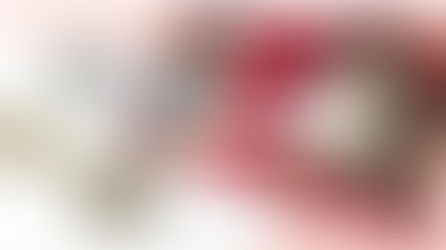8 Benefits of Using Upholstery and Home Decor Fabrics for Bag-Making - You Might Be Surprised!
- Susan

- Dec 2, 2023
- 4 min read
Updated: May 16, 2025

Bags made with upholstery and home decor fabric offer several unique benefits due to the inherent properties of this type of fabric. Upholstery fabric, traditionally used for covering furniture, brings durability, style, and functionality to bags and possibly some significant cost-savings to the bag-maker. Here are eight reasons why using home decor and upholstery fabric is often a really good choice:
Durability and Strength: Upholstery and home decor fabrics are designed to withstand significant wear and tear. This makes them ideal for bags that need to endure daily use and abuse, strength for carrying heavy loads, and rough handling. Less interfacing is generally required with most bagmaking projects because upholstery and home decor fabrics are typically much sturdier fabrics which can eliminate the need for interfacing. The decision to use interfacing should be based on the specific requirements of your bag sewing project. Evaluate your fabric's characteristics and the intended use of the bag you want to make to decide to use any interfacing. If you prefer the smooth look achieved with fusible foam interfacing, you will probably need to use it. Remember, each bag project is unique, and what works for one might not work for another.
Variety of Textures and Designs: Upholstery fabric is available in a wide range of textures, colors, and patterns. This variety allows for creative and attractive bag designs, catering to diverse styles and uses. A nice example of texture and color can be found in this gorgeous chenille in copper.
Stain and Water Resistance: Many upholstery fabrics are treated to be stain and water-resistant, making them practical for bags that are exposed to different environments or used in various weather conditions. Some fabrics naturally resist stains better than others. Synthetic fibers like polyester, nylon, and acrylic are much less absorbent than natural fibers, making them more stain-resistant. Some fabrics are treated with chemicals that repel liquids and resist stains such as waxes, Teflon, and silicone. These treatments create a barrier that prevents substances from penetrating the fibers. Fabrics with tighter weaves and higher thread counts naturally also resist water better.
Structural Integrity: Upholstery fabrics often have a good balance of flexibility and stiffness, which helps bags maintain their shape over time, even with regular use. Heavier home decor and upholstery fabrics are more resistant to stretching and sagging.
Comfort: For bags that come into contact with the body, like shoulder straps or handles, the softness of some upholstery fabrics can add a level of comfort. Velvet fabric is a popular choice.
Eco-Friendly Options: There are upholstery fabrics made from recycled materials, offering an eco-friendly option for bag-making. This appeals to environmentally conscious consumers. Durable fabrics like home decor fabrics, contribute to sustainability by reducing the need for frequent replacements. Childrens backpacks seem to have to be replaced more often, as well as cosmetic bags.
Cost-Effectiveness: In some cases, using upholstery fabric can be cost-effective, especially if bag-makers use 50% off remnants or offcuts from furniture production. Most home decor fabrics are made available on rolls that measure 55-60" wide making it an economical consideration when comparing it to quilting cottons, linen, and other light-weight fabrics that typically are only available at 44" wide. Check and compare the pricing per square inch.
Easy Maintenance: Depending on the type of upholstery fabric, many are easy to clean and maintain, which is a significant advantage for bags that are used regularly. Some upholstery fabrics are pre-treated with stain resistant coatings.
Sewing Considerations:
Three words: sewing machine capability. Upholstery fabrics are heavier, so ensure your sewing machine can handle the thickness, especially if adding interfacing. See this post about the best sewing machine for bag-making. Your sewing machine needles and thread should be suitable for heavier fabrics. Use a needle that can handle heavy threads and fabrics, like a size 90/14 or 100/16. Denim or leather needles are often strong enough to sew through thick fabrics. Check that your sewing machine can handle the thickness of heavy-duty threads. Match the thread to the fabric type. For example, use polyester thread for synthetic upholstery fabrics. Heavier threads (lower weight numbers) are stronger and more suitable for heavy fabrics. You may need to adjust the tension settings on your sewing machine to get it just right.
Tip: Sew a little slower to prevent needle breakage and to ensure even stitches.
The use of home decor and upholstery fabric in bag making is a practical choice that offers durability, style, and versatility. It allows for the creation of unique, long-lasting, and functional bags suited for a wide range of purposes.
Resources for Home Decor and Upholstery Fabrics:
Suggested Patterns:
































